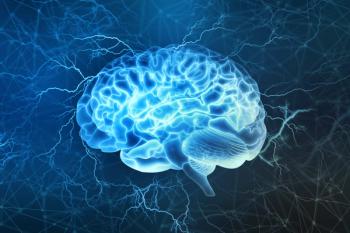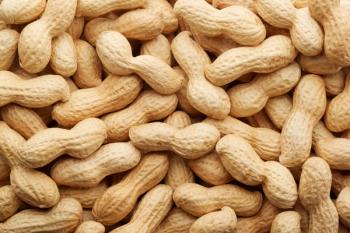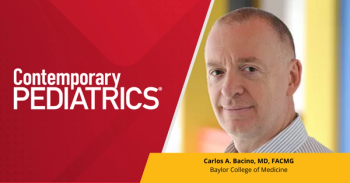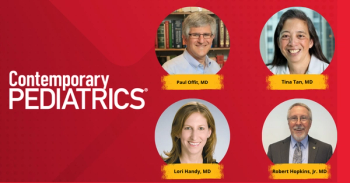
FDA accepts NDA for berotralstat in HAE patients aged 2 to 11 years
The federal agency provided BioCryst Pharmaceuticals a target action date of September 12, 2025 for potential approval of berotralstat (ORLADEYO).
On May 14, 2025, the FDA accepted a new drug application (NDA) for berotralstat (ORLADEYO; BioCryst Pharmaceuticals, Inc.) in pediatric patients aged 2 to 11 years with hereditary angioedema (HAE), according to a press release from BioCryst. With the acceptance of the application, the FDA has also granted priority review, with a prescription drug user fee act target action date of September 12, 2025 for potential approval.1
If approved, berotralstat would become the first targeted oral prophylactic therapy for patients with HAE under the age of 12 years.1 The rare, inherited disease is characterized by unpredictable, potentially life-threatening recurrent swelling attacks most commonly affecting the extremities, face, abdomen, and larynx. Symptoms often begin in childhood and before puberty, with the earlier age of symptom onset significantly correlating to increased perceived severity and overall negative life impact.2
Currently, berotralstat is an oral, small-molecule plasma kallikrein inhibitor currently approved for prophylaxis of HAE attacks in adults and adolescents aged 12 years and older.2
“We are excited to take another step closer to bringing [berotralstat] to younger pediatric patients with HAE. We consistently hear from patients, caregivers and physicians about their desire for a more convenient therapeutic option to treat young children with HAE, and we now may have the opportunity to bring this to them later this year,” said Jon Stonehouse, president and chief executive officer of BioCryst, in a statement.
Phase 3 APeX-P trial data led to NDA
The NDA was based on positive, interim data from the
The trial was among a a cohort of patients aged 2 to < 12 years with HAE with C1-inhibitor deficiency (HAE-C1INH) and reporting ≥2 HAE attacks within 6 months prior to enrollment. According to prior
According to the poster presentation presented at AAAAI, there were 29 patients with a median age of 8 (3-11) years, of which 48% were female. The median age of symptom onset was 2.0 (0.3-8.0) years, with 83% occurring before age 6. During the standard of care period the median monthly attack rate was 0.96 (0-5.0). From months 1 to 12, the median HAE monthly attack rate was 0/ Ranges at month 1 and month 12 were 0–4.0 and 0–1.7, respectively, according to results.
"If approved, we believe this oral granule formulation of [berotralstat] could help children with HAE and their families better manage their condition and avoid the traumatic experience of acute attacks with emergency care or hospital stays," added Helen Thackray, MD, chief research and development officer at BioCryst.
Comments from Jolanta Bernatoniene, FRCPCH, PhD
In a previous email Q+A with Contemporary Pediatrics, Jolanta Bernatoniene, FRCPCH, PhD—of the Paediatric Infectious Disease Department at Bristol Royal Hospital for Children located in Bristol, United Kingdom, and primary investigator of APeX-P—discussed the potential impact berotralstat could have if approved by the FDA for patients younger than 12 years of age.
Bernatoniene:
HAE can have a negative impact on daily activities, including missed school days, diminished academic performance, and missed engagement in sports and social opportunities. In addition to physical burden, there can be significant impact on mental health and other developmental aspects of life experienced by young pediatric patients who live with HAE.
In APeX-P, we observed that young pediatric patients with HAE are experiencing severe swelling attacks at a very young age, with a median age of HAE symptom onset of 2 years. These findings support an earlier age of symptom onset and need for HAE prophylaxis than has generally been understood.
Of note, APeX-P is the largest clinical trial to evaluate a prophylactic therapy for HAE in patients in this age group, and trial enrollment was completed ahead of schedule and included more than the initial target number of participants.
I personally have had a positive experience as a clinician to see such a significant benefit in terms of the clinical improvement of children with HAE and positive impact on the quality of life of children and their families.
Therefore, this oral, once-daily prophylactic therapy could help children with HAE and their caregivers better manage their disease and participate in daily activities that are important to them.
References:
1. BioCryst announces FDA acceptance of NDA for ORLADEYO (berotralstat) oral granules in patients with hereditary angioedema aged 2 to 11 Years. BioCryst Pharmaceuticals, Inc. Press release. May 14, 2025. Accessed May 14, 2025. https://ir.biocryst.com/news-releases/news-release-details/biocryst-announces-fda-acceptance-nda-orladeyor-berotralstat
2. Fitch, J. AAAAI: Berotralstat reduces monthly hereditary angioedema attack rates in children. Contemporary Pediatrics. March 5, 2025. Accessed May 14, 2025. https://www.contemporarypediatrics.com/view/aaaai-berotralstat-reduces-monthly-hereditary-angioedema-attack-rates-children
Newsletter
Access practical, evidence-based guidance to support better care for our youngest patients. Join our email list for the latest clinical updates.








